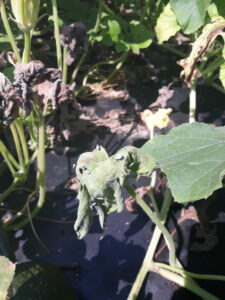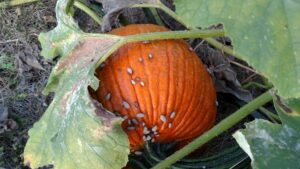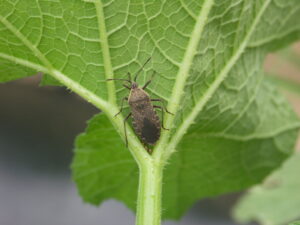Squash bugs are a pest of cucurbit crops and can sometimes go unnoticed until late in the season when the local populations have built up and you see them in high numbers (Figure 1) attacking the fruits of your crop. Squash bugs are similar in appearance to stink bugs but smell much more pleasant (in my opinion) when you squish them. They feed on all parts of the plant (leaves, stems, fruits) with piercing-sucking mouthparts and inject toxins in their saliva that can lead to localized wilting and crisping of leaves (Figure 2). Squash bugs are particularly problematic in pumpkin and squash (Figure 3) but can also be quite damaging in cucumber.
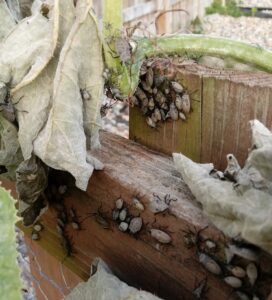
Figure 1. Squash bug nymphs of various age on pumpkins, late in the season, in a home garden. Photo by Laura Ingwell.
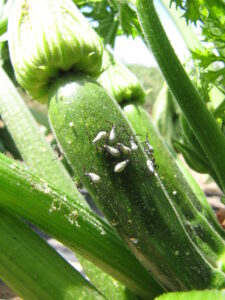
The adults (Figure 4) are more difficult to control with insecticides, therefore best management practices should target the young nymphs, soon after hatching. The eggs are easy to identify. They are copper-colored and laid on the underside of leaves or the stem of plants. They are laid in clusters of straight lines. When the nymphs first hatch, they are black/light green (Figure 5) and quickly turn pale gray/white. As of June 5, I have been seeing egg clusters on some vegetation at farms near Lafayette, IN. Now is the time that you should be inspecting your crops, looking at the underside of the leaves, and making insecticide applications when the eggs hatch. This can occur over a span of weeks, so multiple applications may be necessary to treat them all. However, early intervention can prevent the build-up that we get frustrated with later in the season.
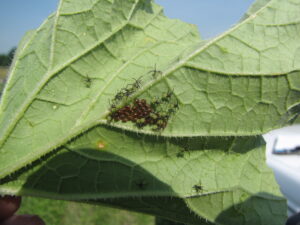
Figure 5. Squash bug nymphs hatching from the distinct egg clusters on the underside of the leaf. Photo by Dan Egel.
When egg clusters exceed an average of one cluster per plant, application should be made at the onset of hatching. Refer to the 2020 Midwest Vegetable Production Guide for Commercial Growers at www.mwveguide.org for spray recommendations. For organic considerations, Grandevo® and Azera®, applied at 2 lbs per acre, has shown good control.
